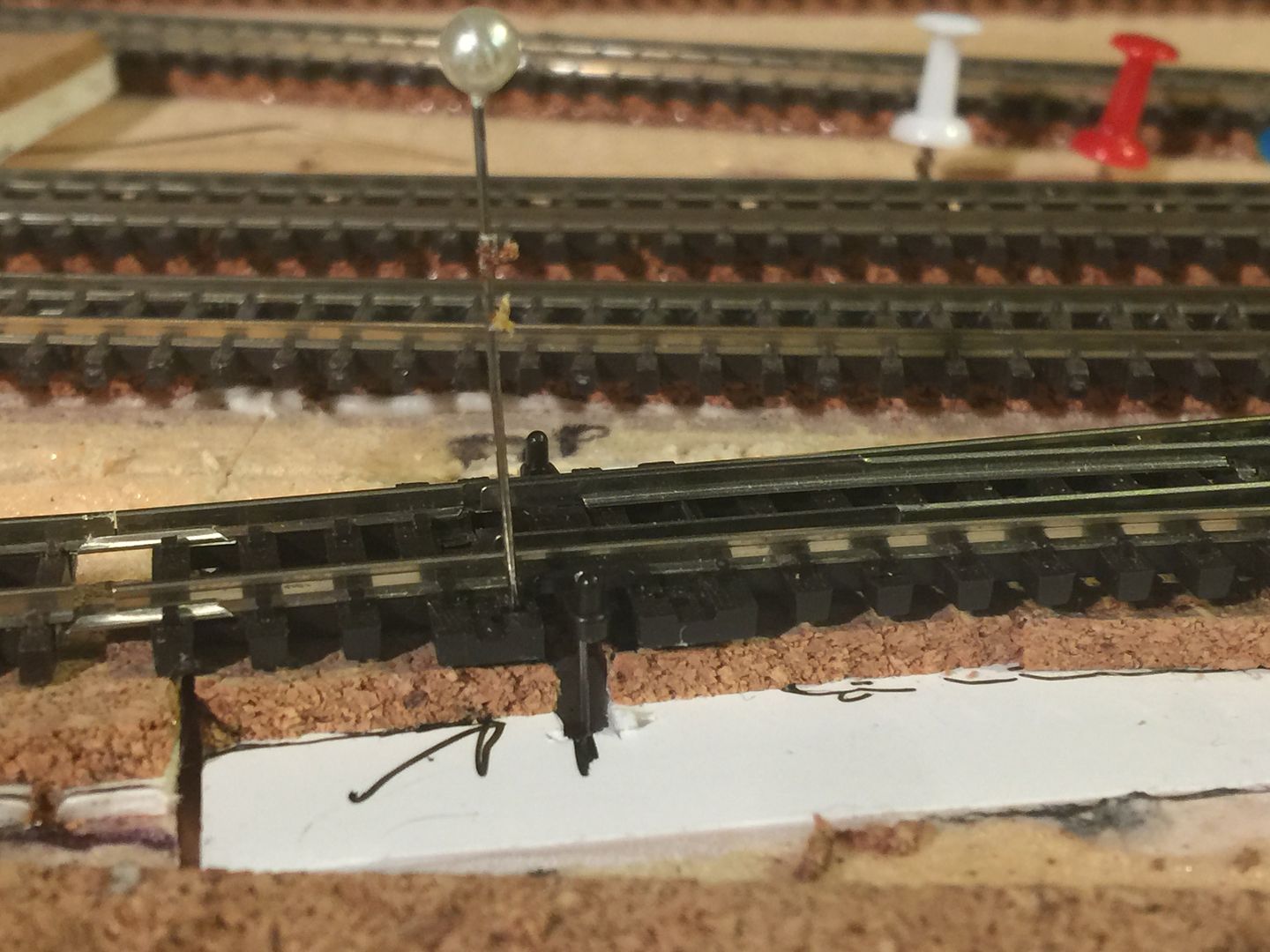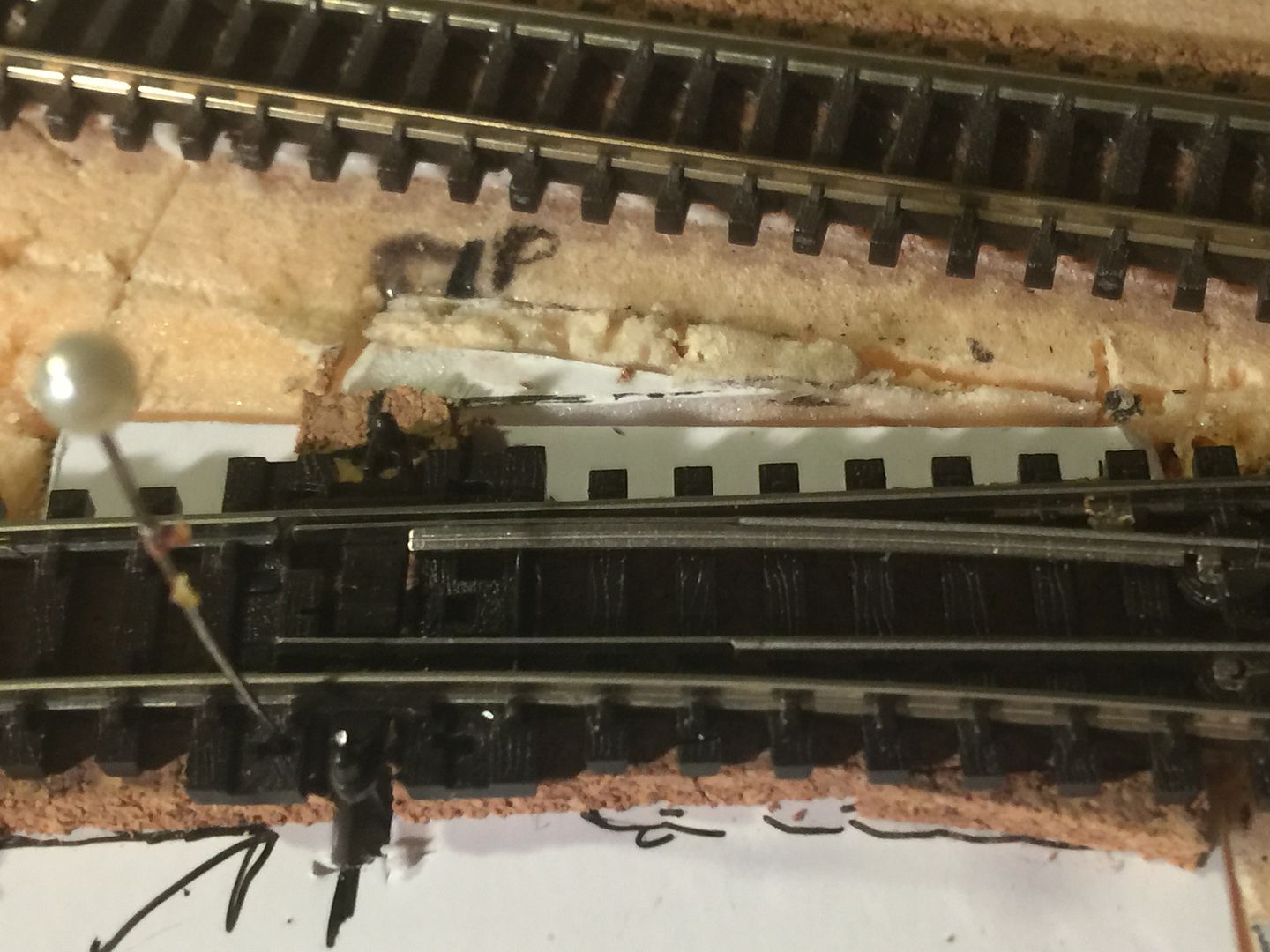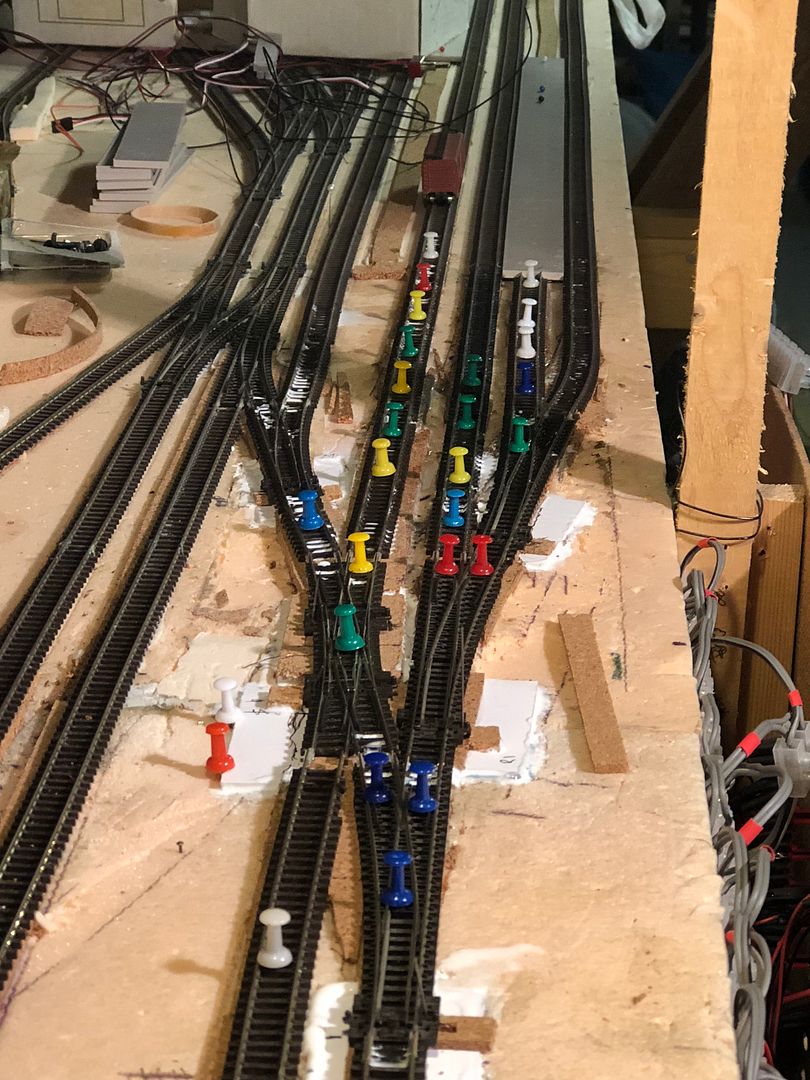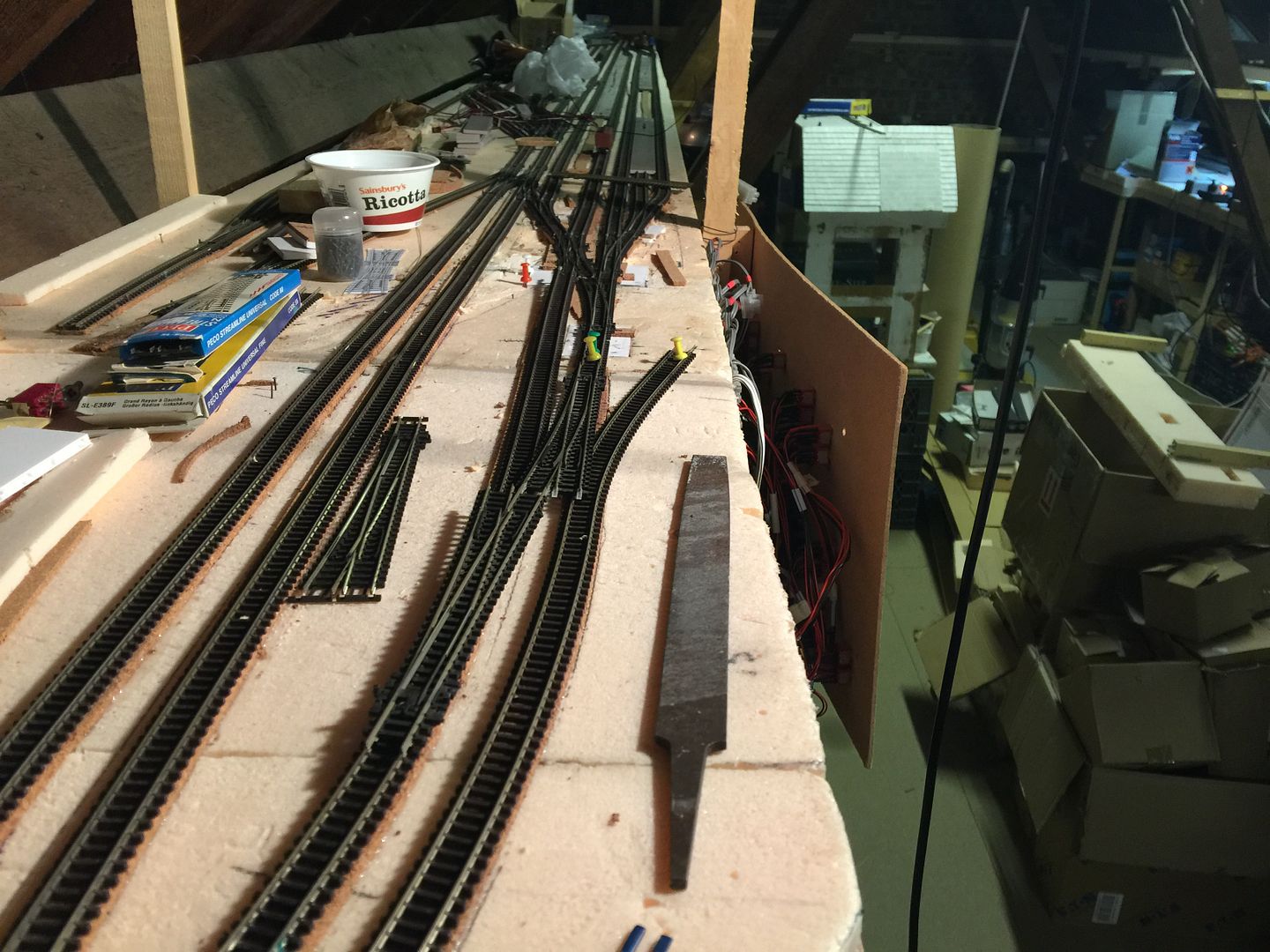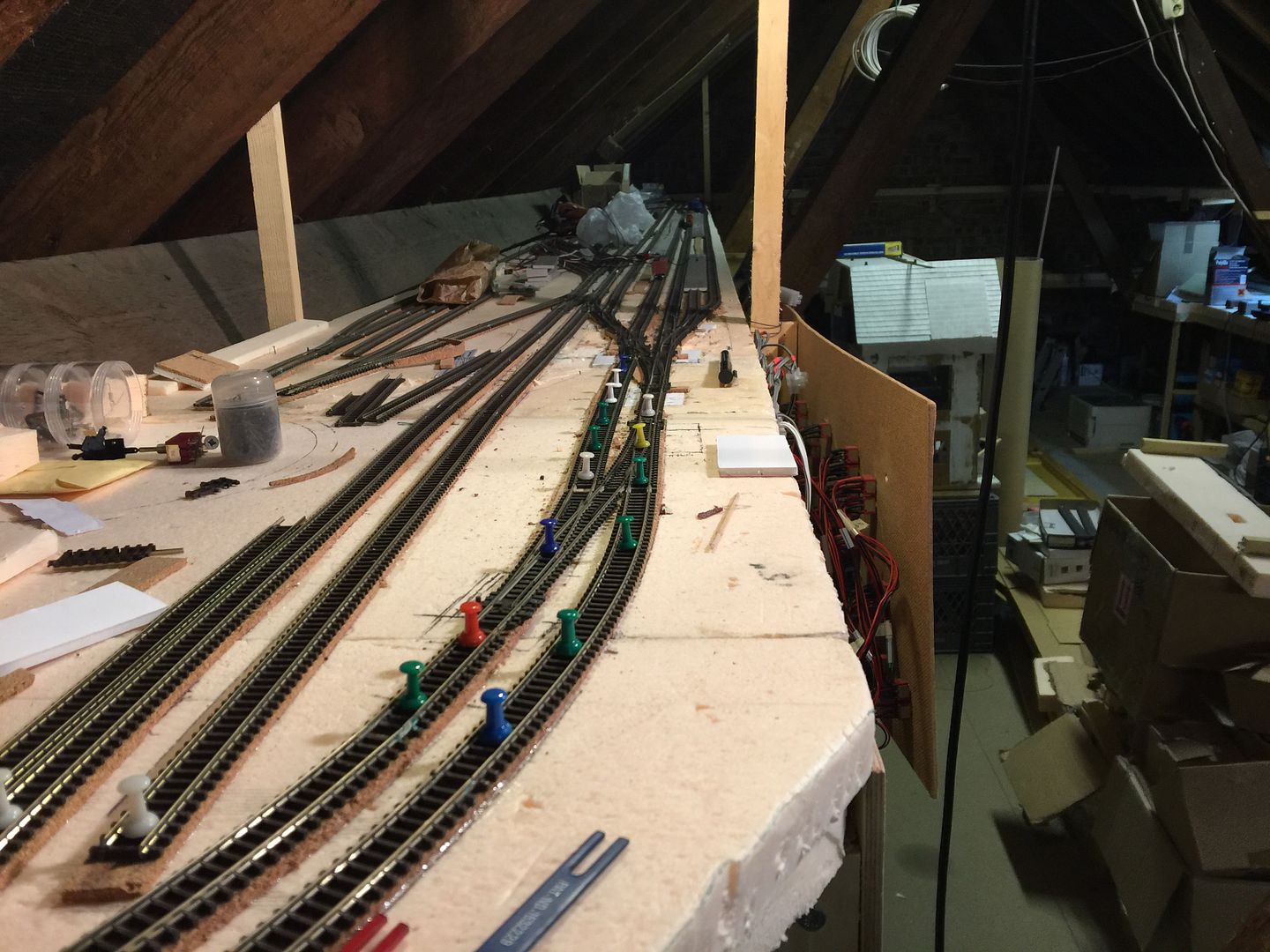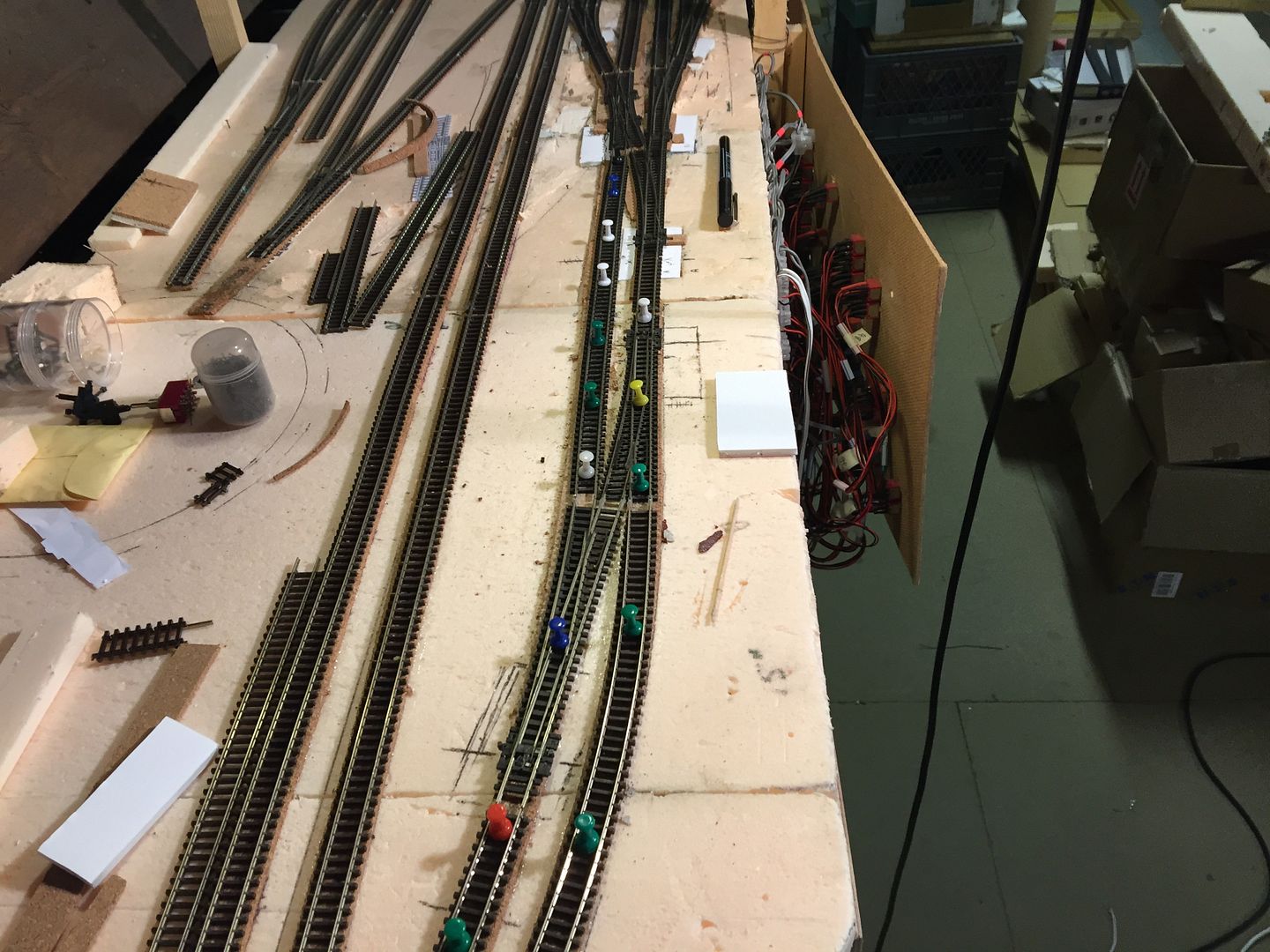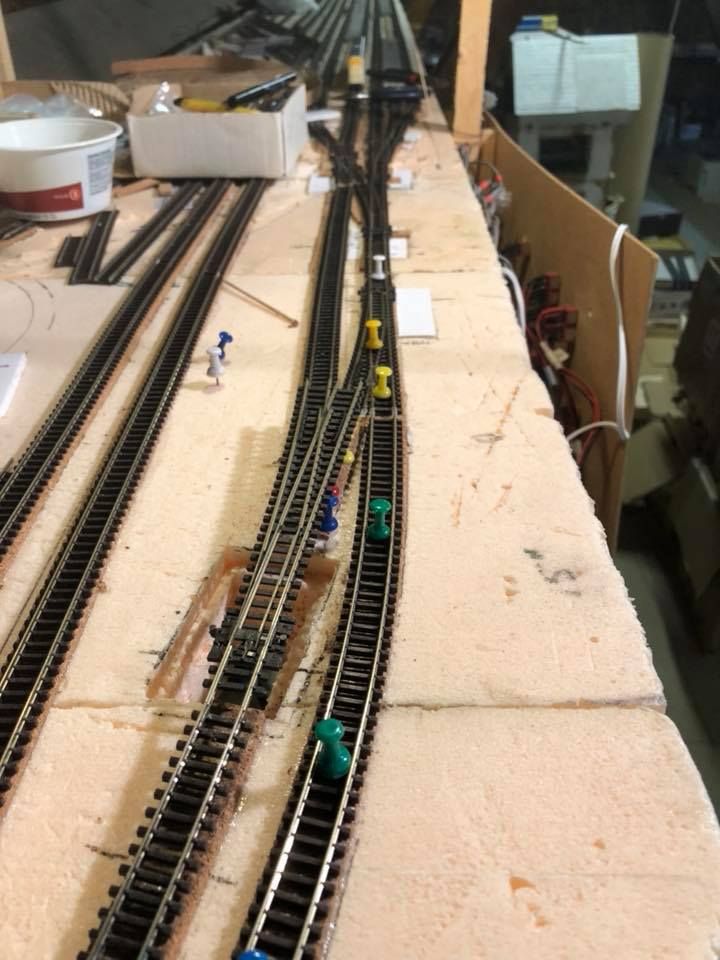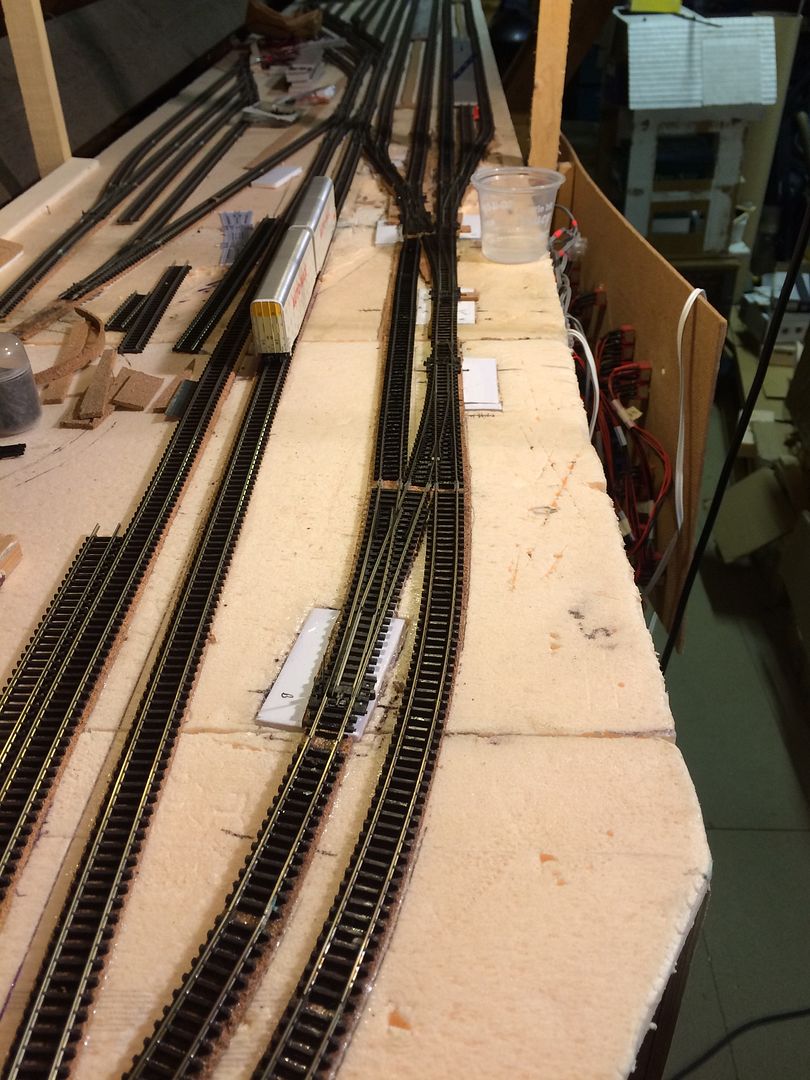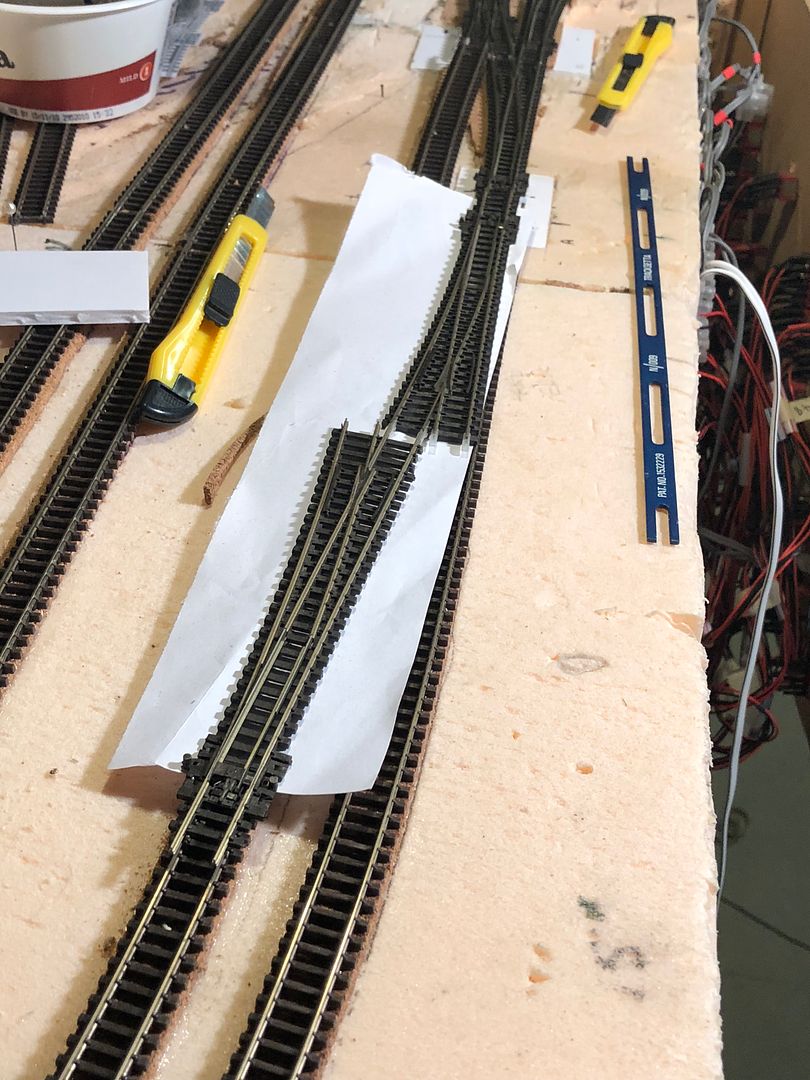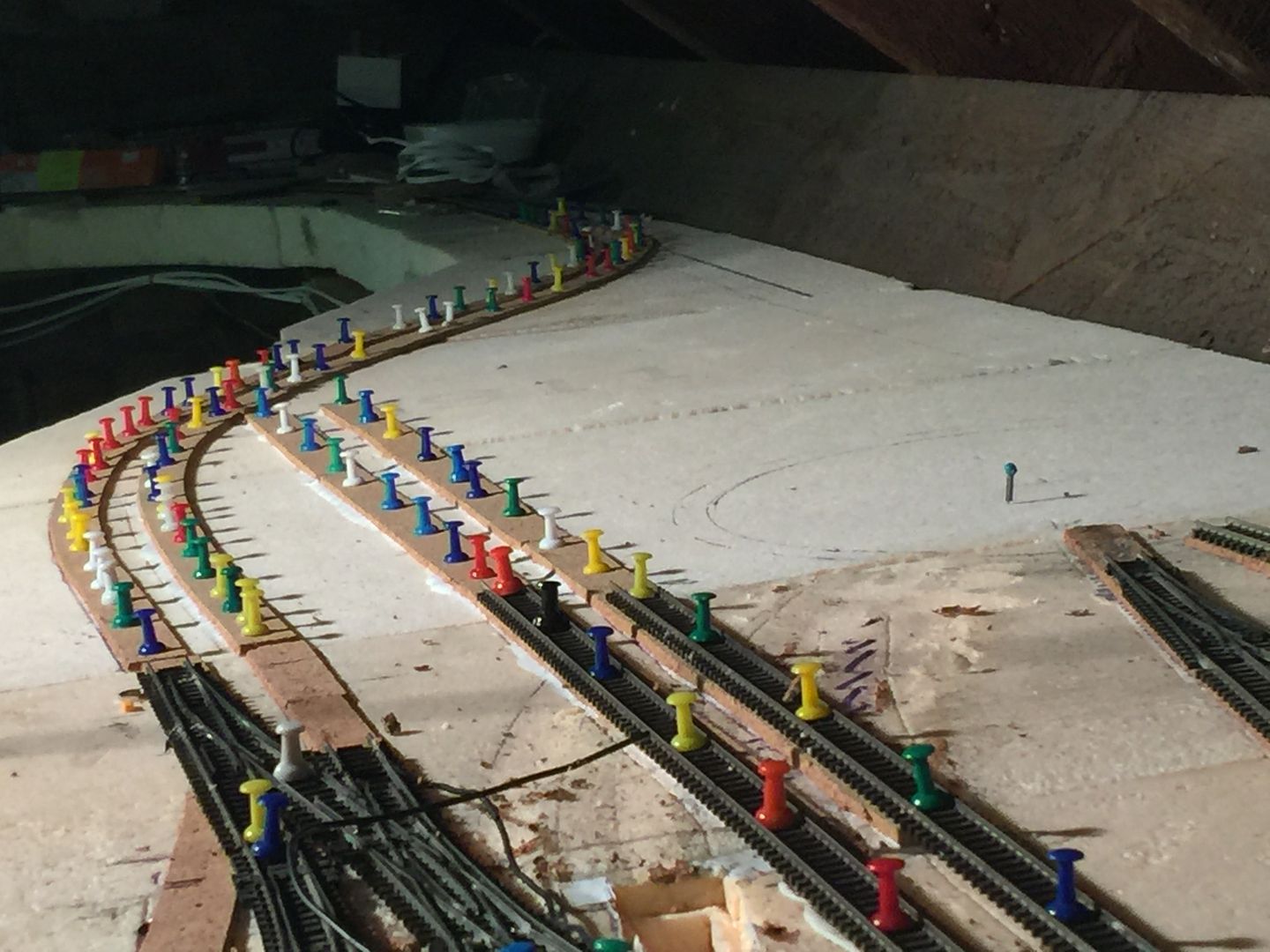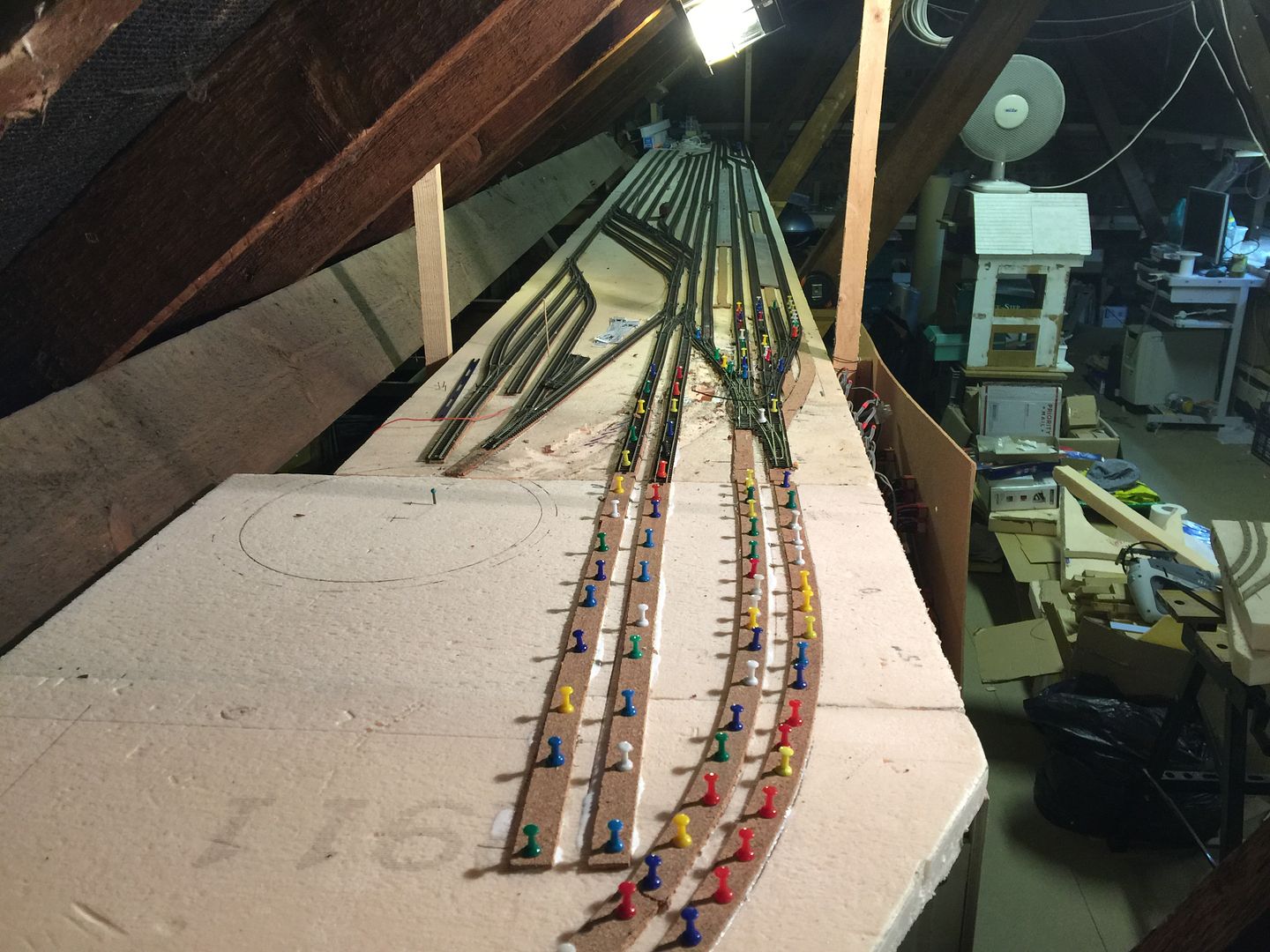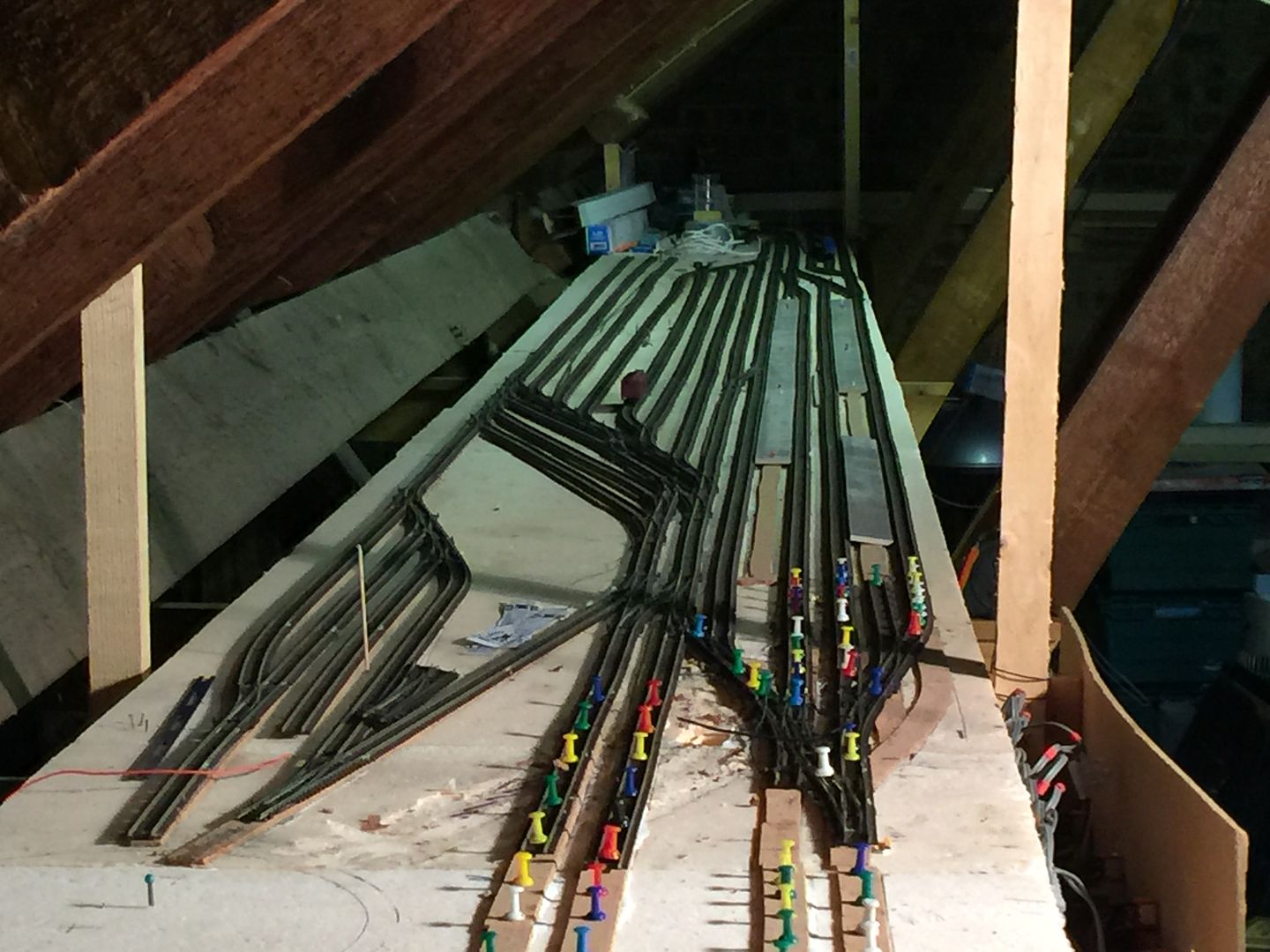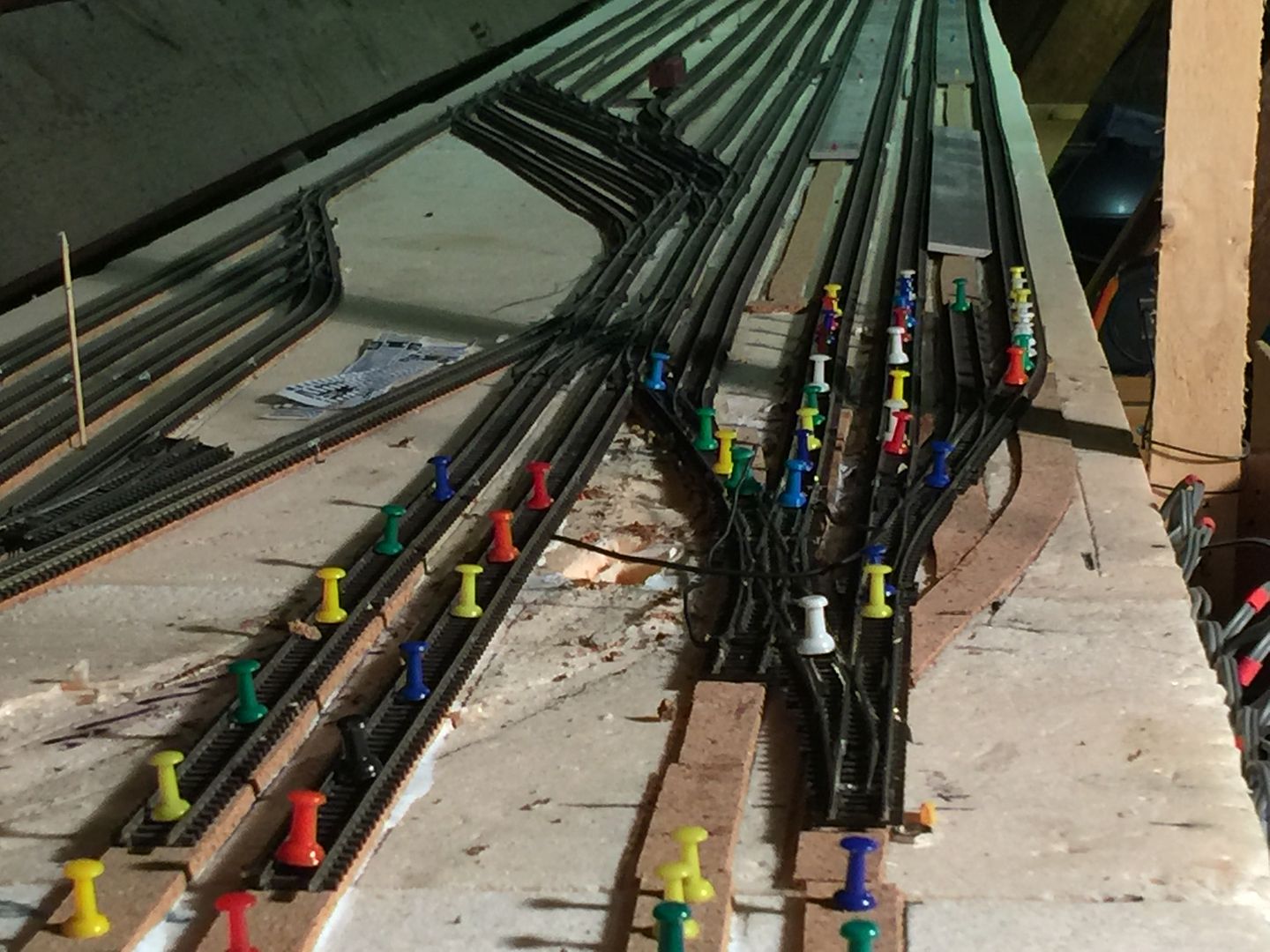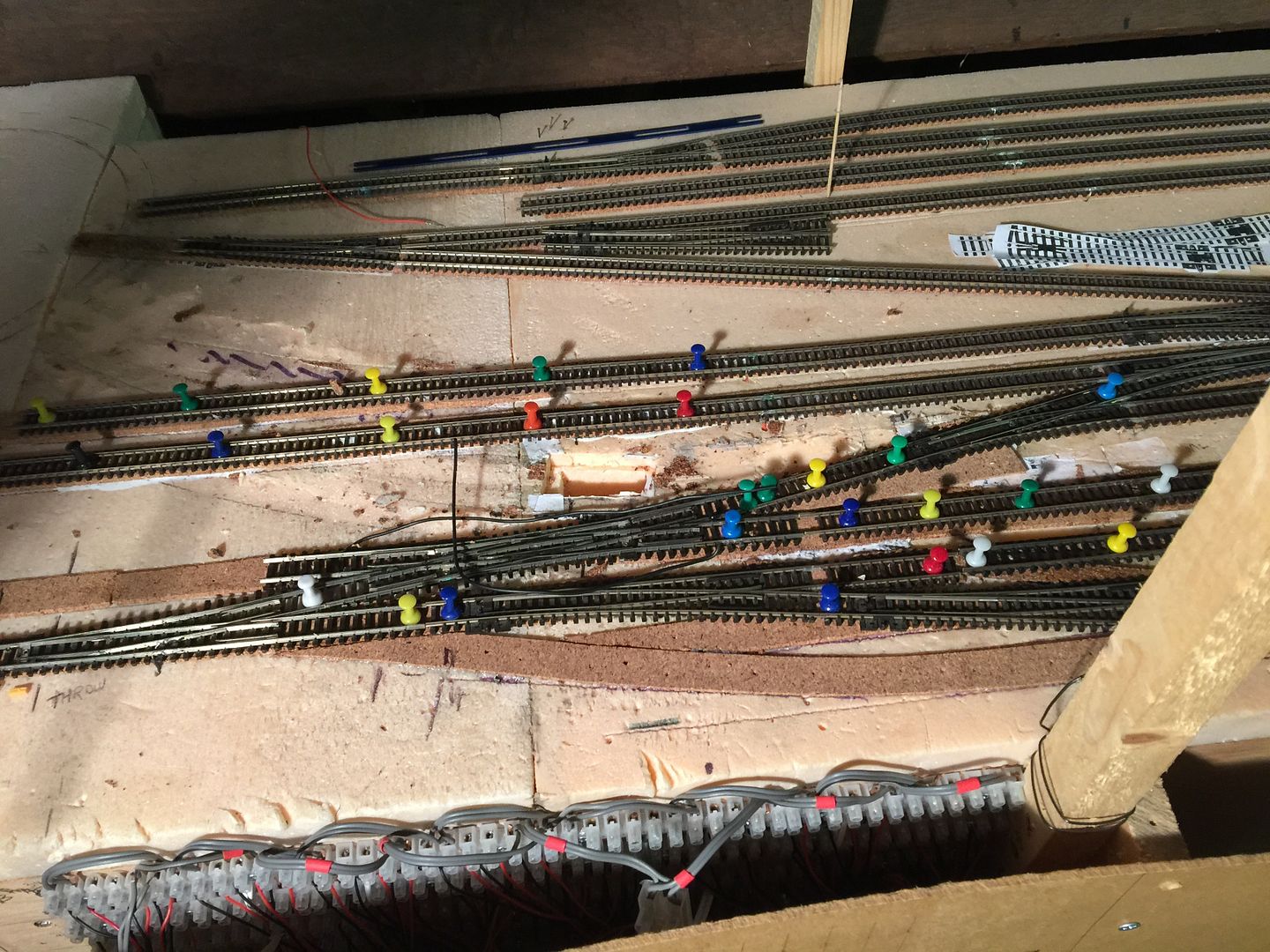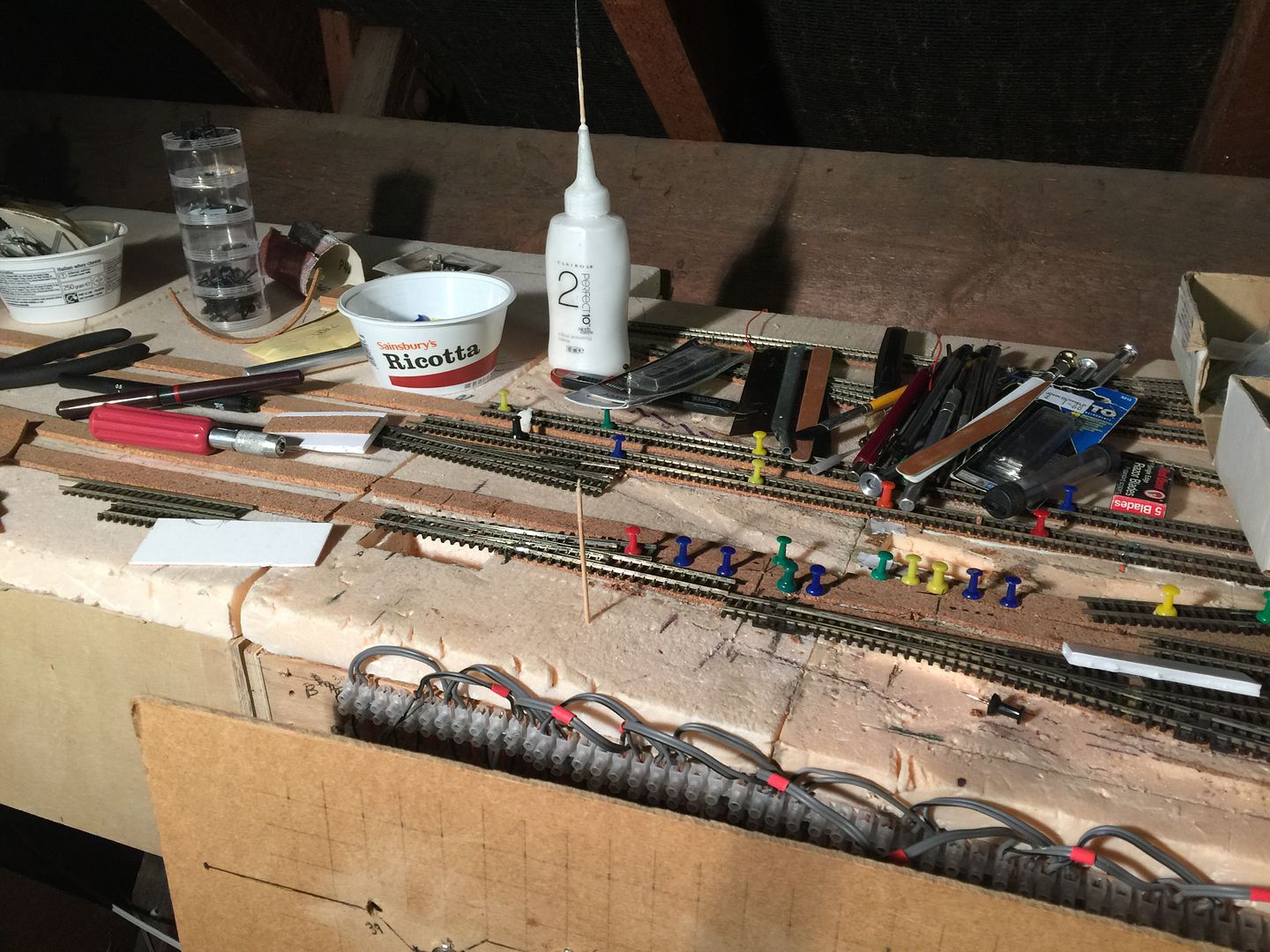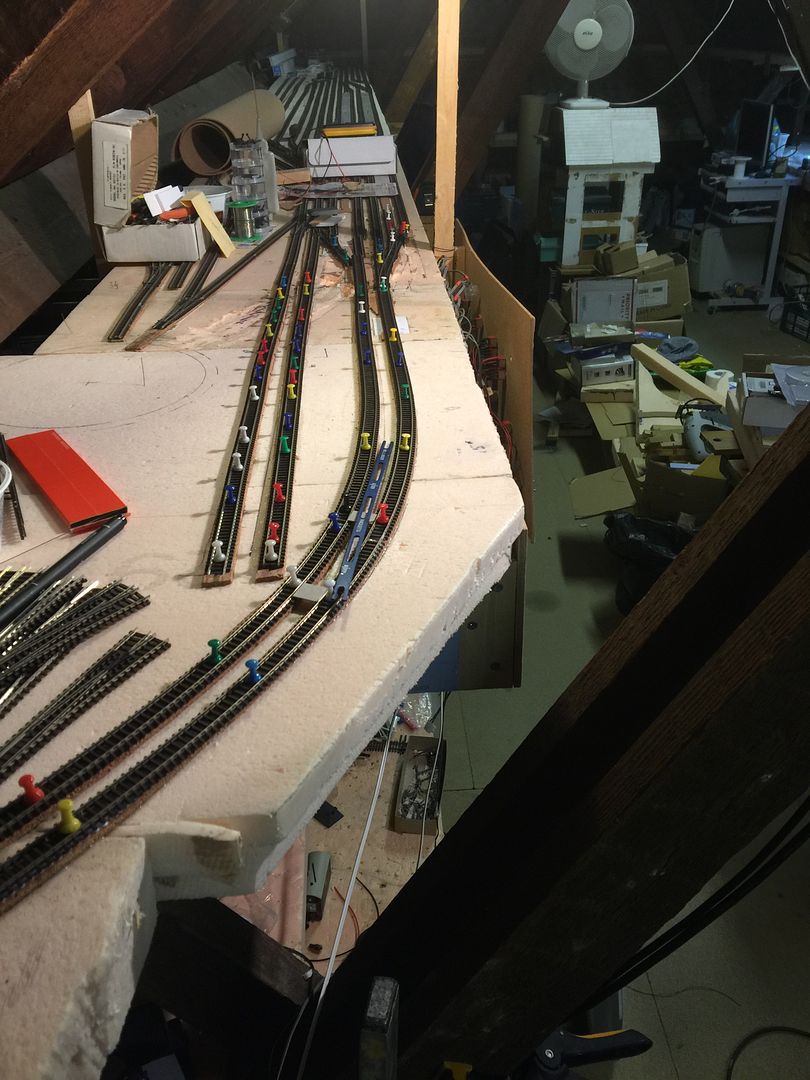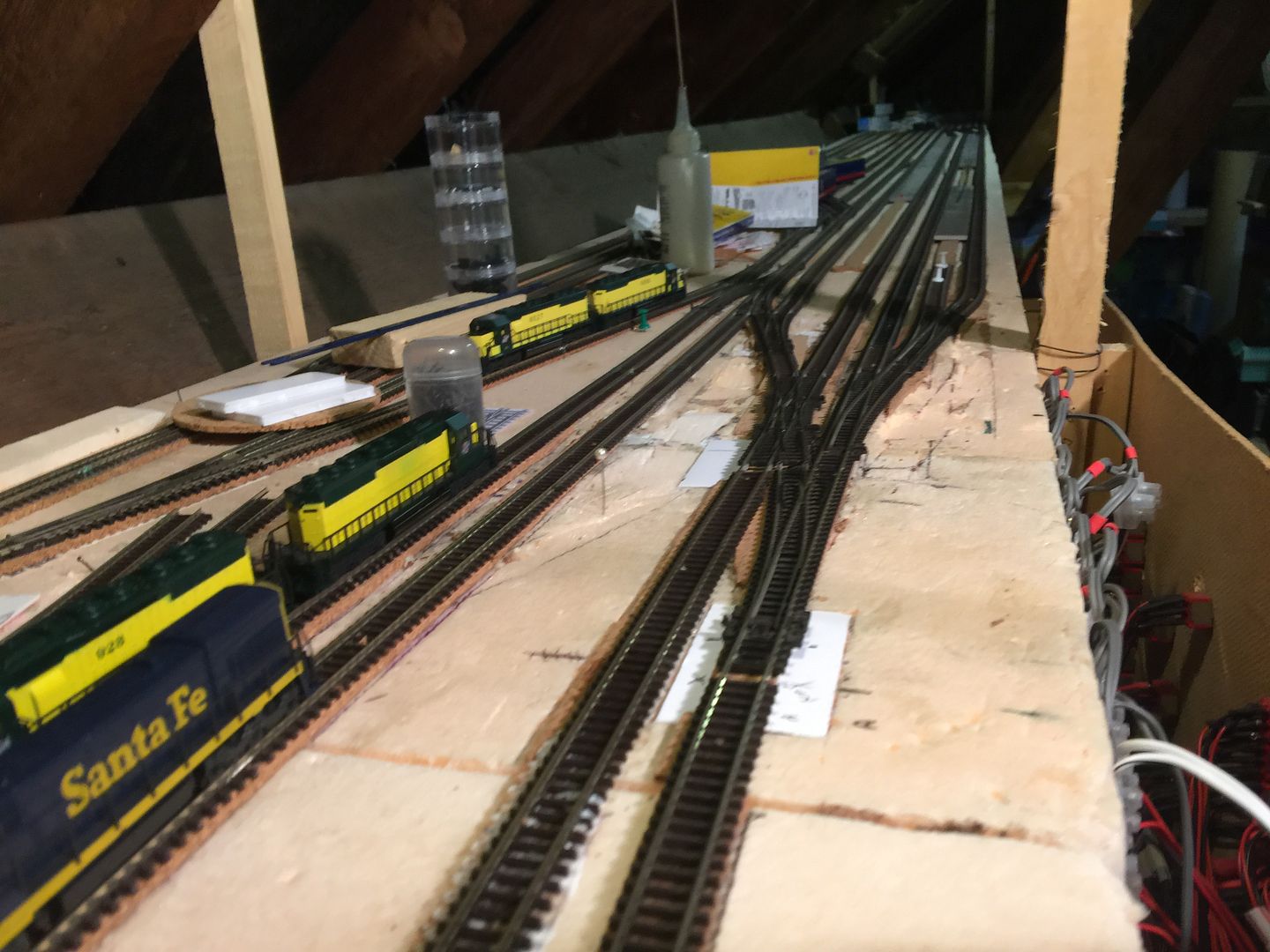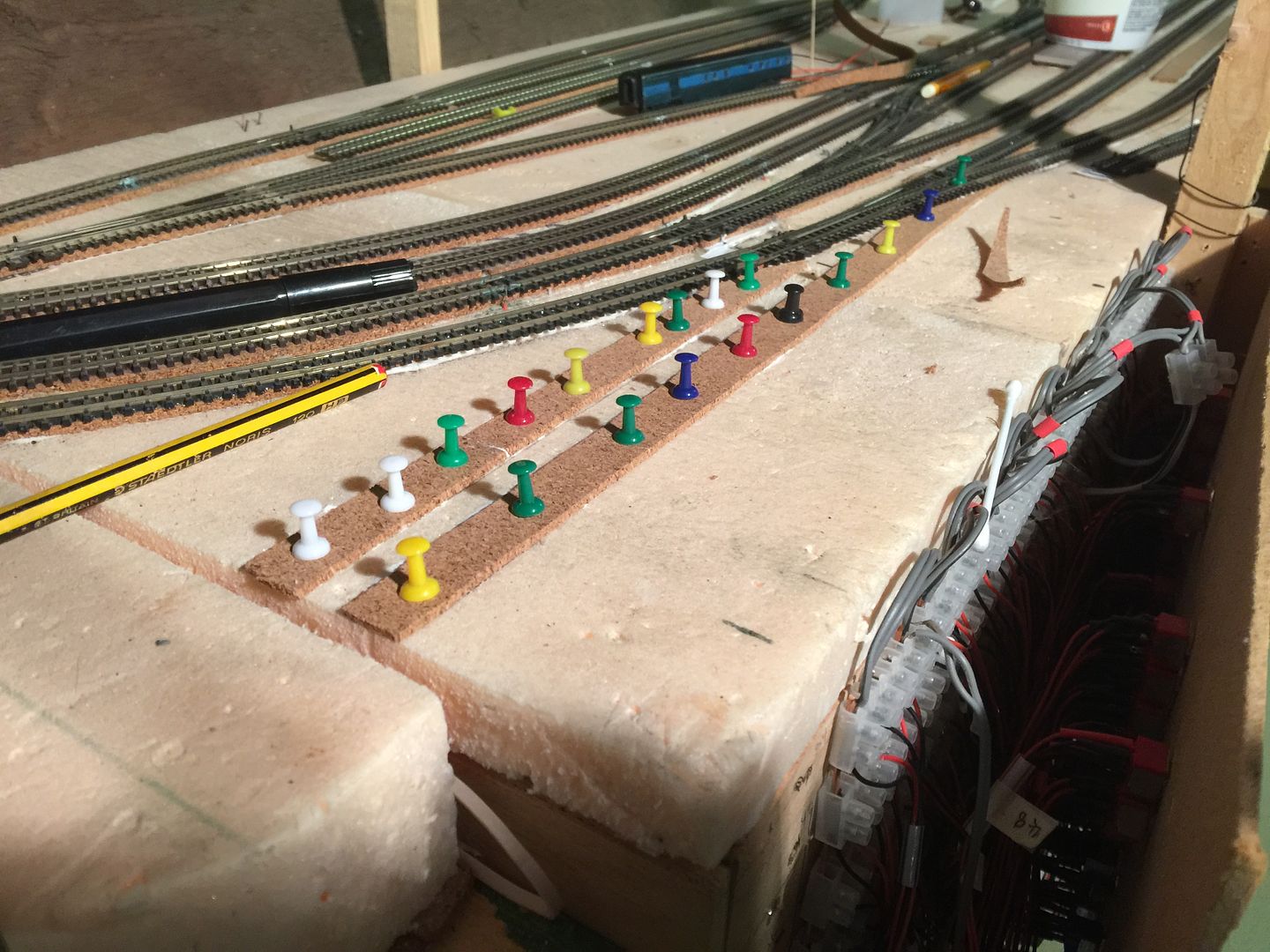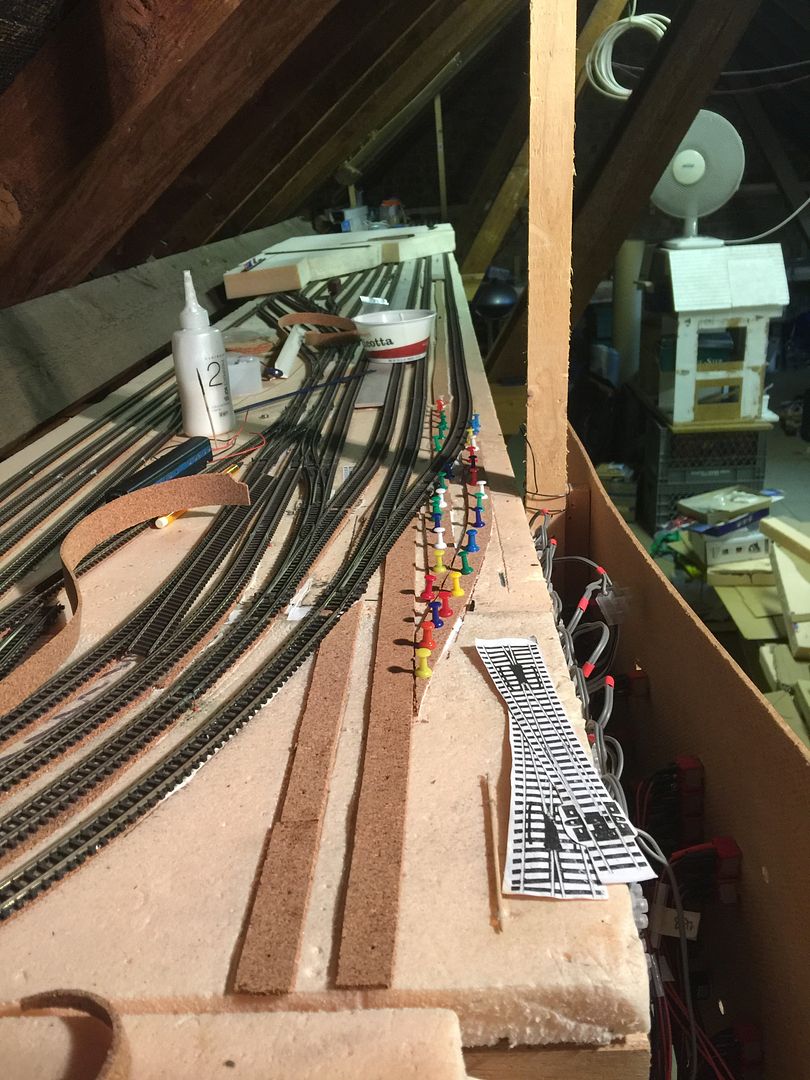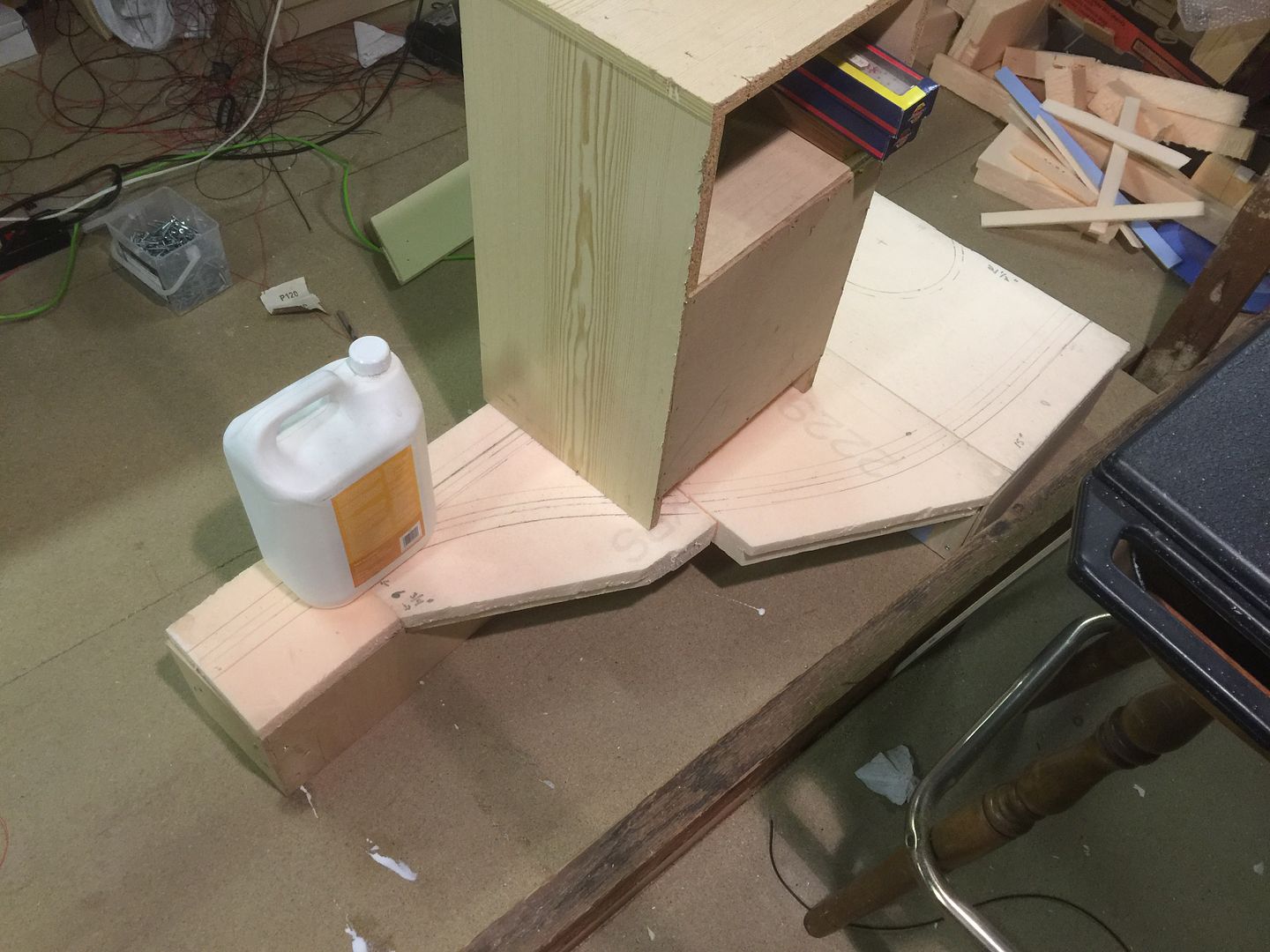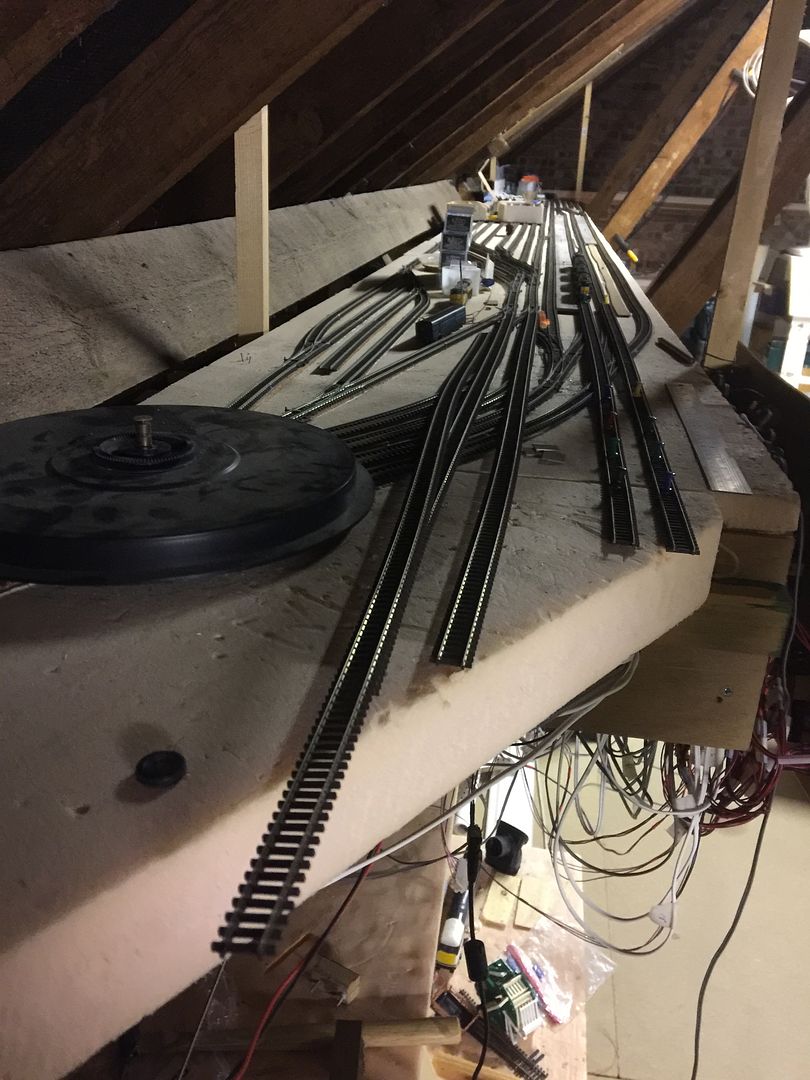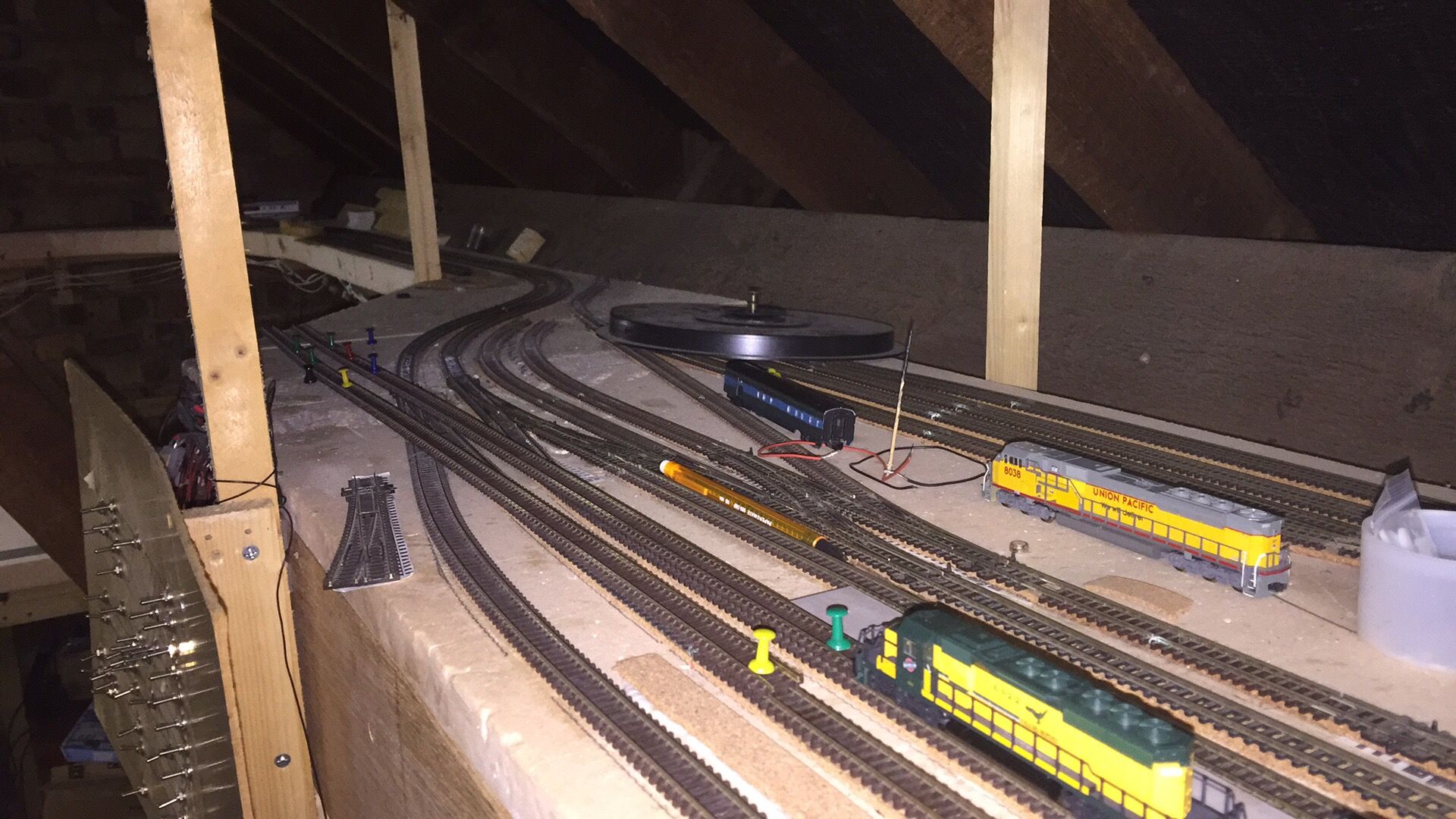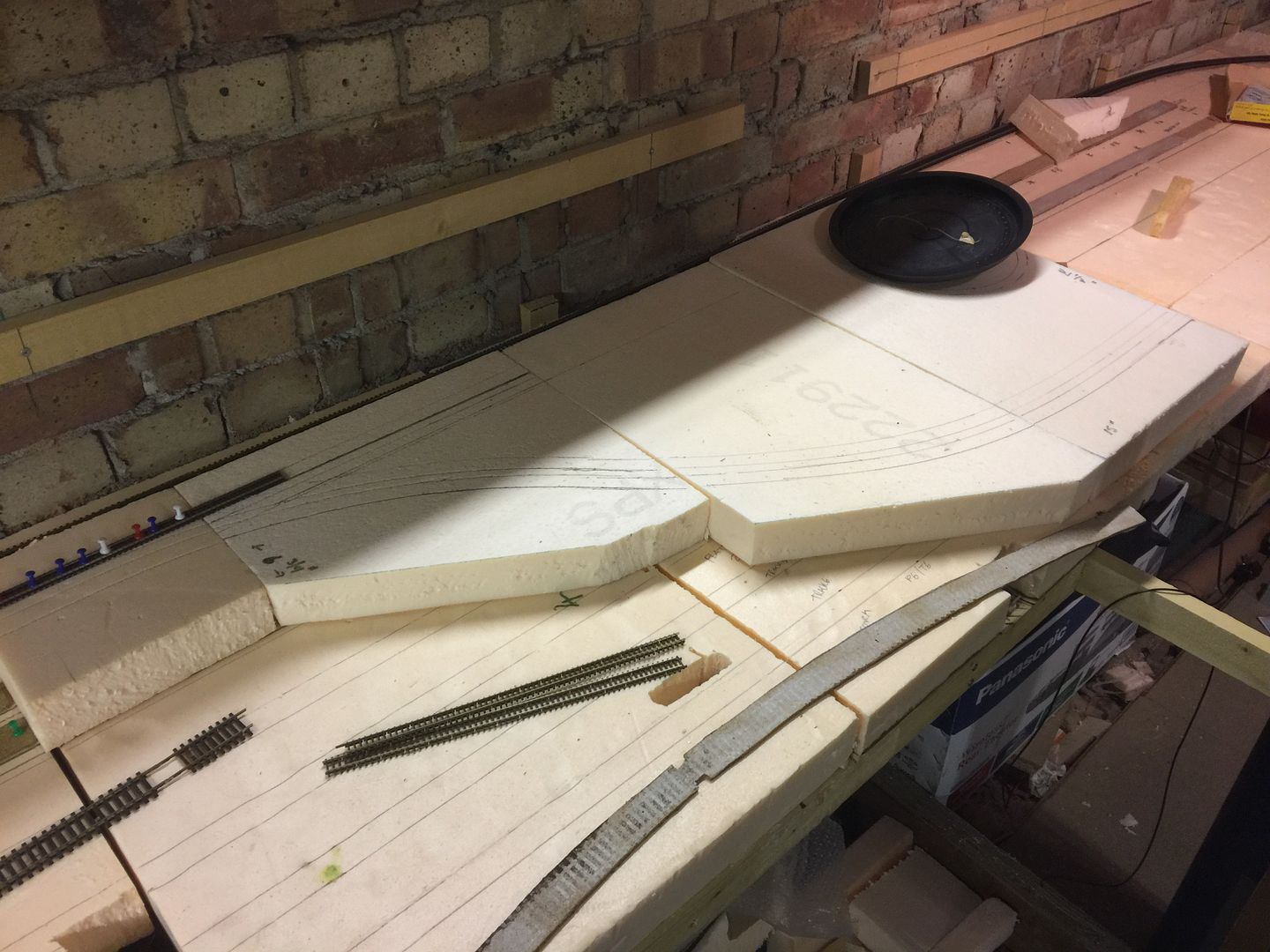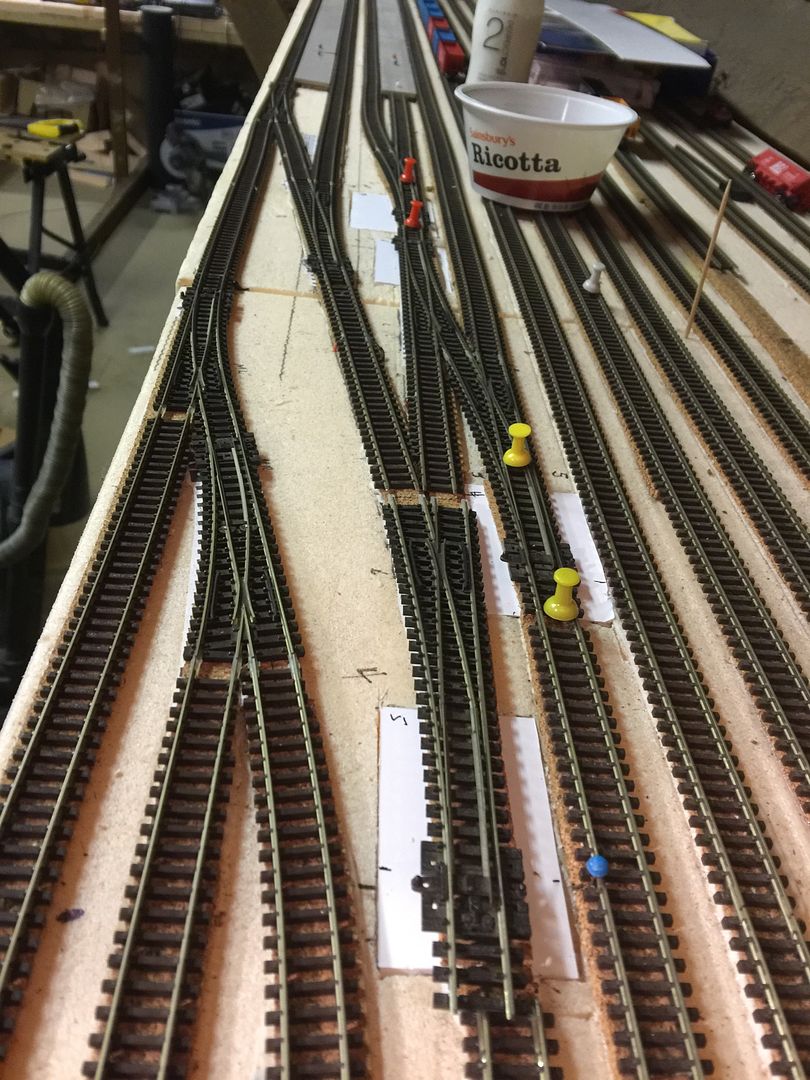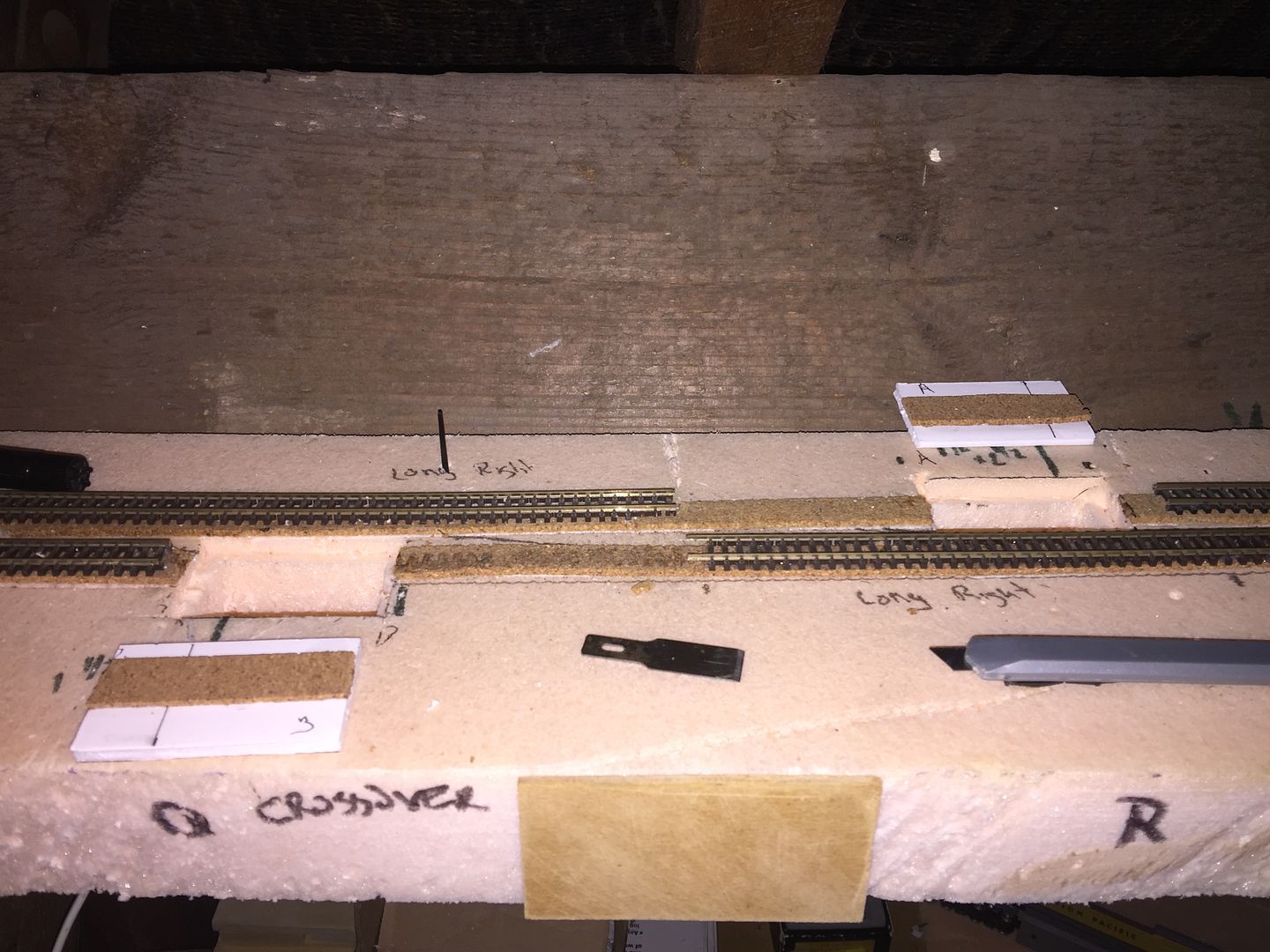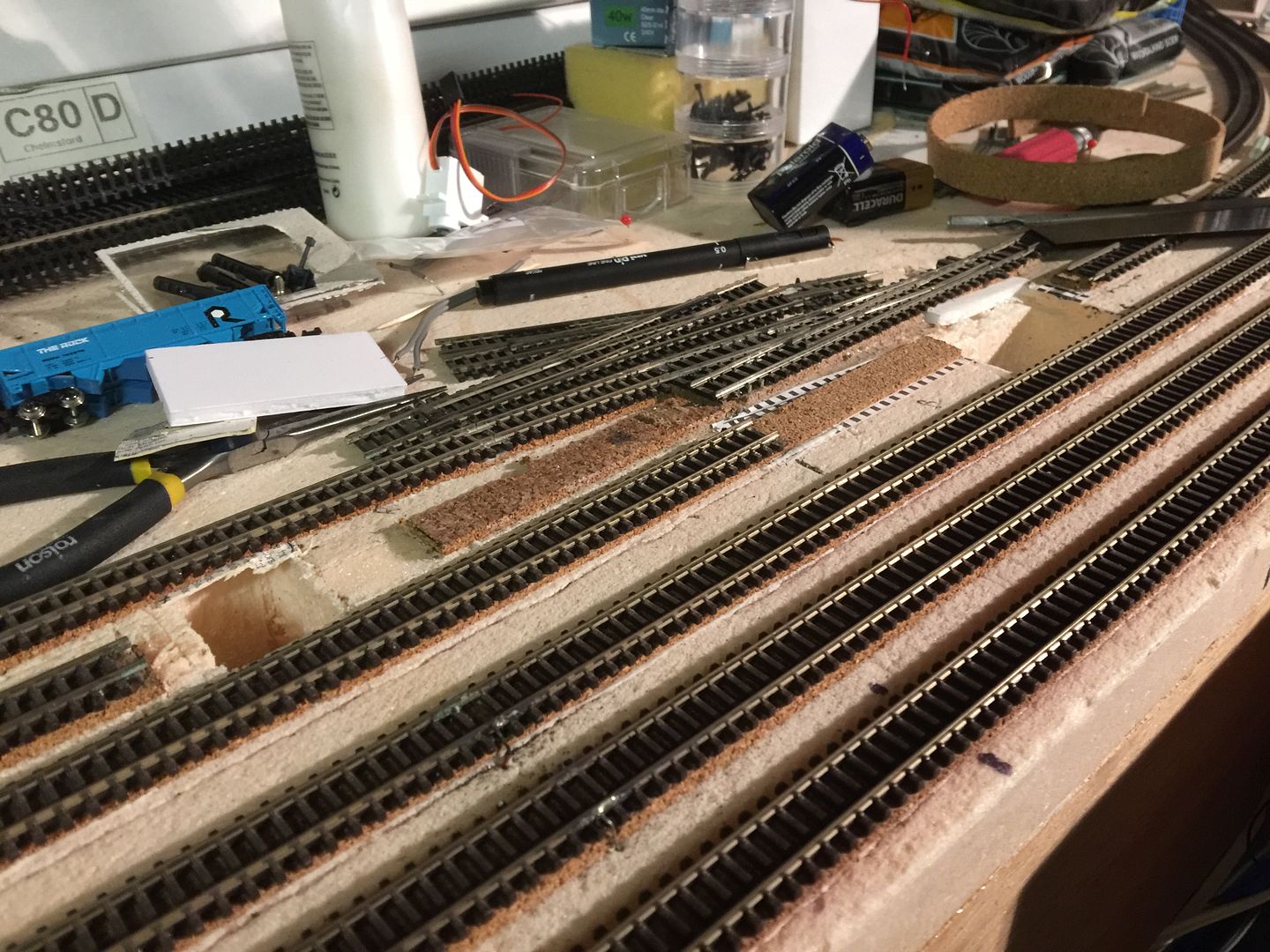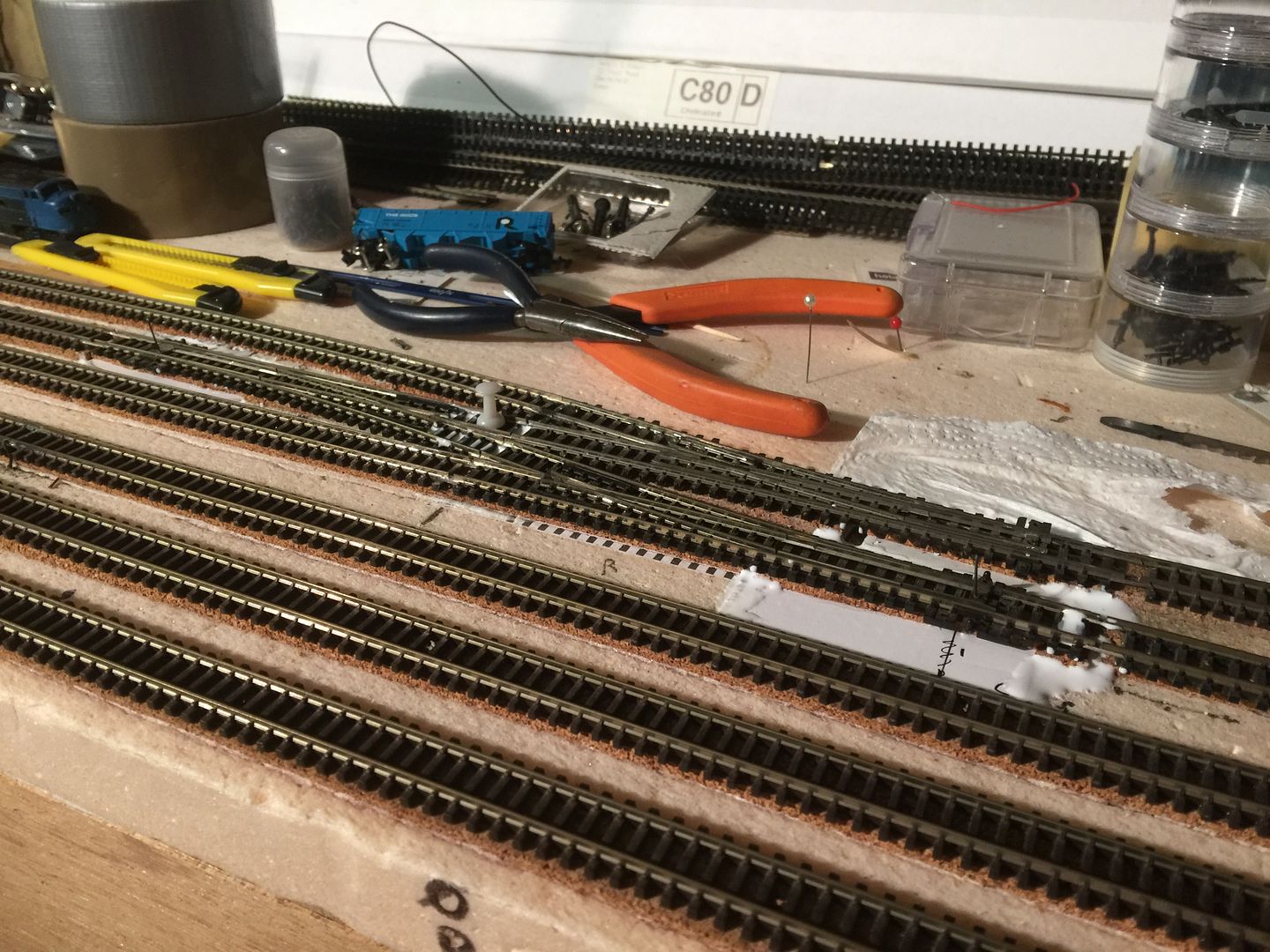But first, getting to where the trains were running again, and significantly better than they were before!
New Throw Wire Method
Drilling the one millimeter hole through the throw bar of the turnout was getting to be a much worse approach; especially considering the cost of a double slip! To help prevent future catastrophes, I decided to investigate options, such as using the existing openings in the throw bar, and moving the servo off center to accommodate....
An Overhead View of the New Method
Station Throat Complete
Track work moving a big step towards completion at the west end of the yard and station.
Following my earlier decision to straighten the approach tracks and add room for a turntable, the track modifications are finally drawing to a conclusion:
- Two drill (switching) leads for the freight yard were extended and straightened.
- The arrival/ departure capacity has increased by dual-purposing the number four platform to freight yard arrival and departure as well as local passenger trains.
- An engine pocket has been added between platform one and two to better service arriving trains, in the same fashion as the east-end of platforms three and four; the station switcher can now wait there while road power cuts off, then go to work servicing head-end cars.
- The -slip switch on platform track three improves flexibility for arriving trains, as well as making the scene look “busier”.
Close-up View of the Changes to the Station Throat
Relocating a Crossover
When I made the changes to the station and yard approach, there was no longer any room for the crossover on the mainline outside; rather than push it farther back up the line, I decide to move it to this point right outside the station throat.
In addition to keep the longer smooth run on the mainline, this option is also prototypical; the turnouts might have once been connected to a tower via manual interlocking levers, so the closer in aspect allowed both visibility of the plant, as well as reducing the amount of control rods required.
Crossover Installed
A test-fit of the turnouts and trimmed track prior to mounting the servos.
Overhead View of the New Crossover
Servos for the Crossover
Preparing the mounting pads on the new crossover just outside the yard and station.
Job Done
All set; just need to add the wiring changes and it's back in business, much more elegantly!
